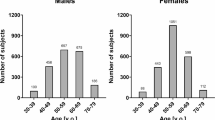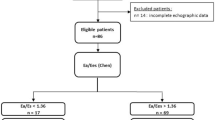Abstract
Introduction
Left ventricular (LV) end-systolic elastance (Ees) can be estimated using single-beat (Ees(sb)) Chen method, employing systolic and diastolic arm-cuff pressures, stroke volume (SV), ejection fraction and estimated normalized ventricular elastance at arterial end-diastole. This work aims to conduct a sensitivity analysis of Chen formula to verify its reliability and applicability in clinical scenario.
Methods
Starting from a baseline condition, we evaluated the sensitivity of Ees(sb) to the parameters contained in the formula. Moreover, a mathematical model of the cardiovascular system was used to evaluate the sensitivity of Ees(sb) to end-diastolic LV elastance (Eed), Ees, arterial systemic resistance (Ras) and heart rate (HR).
Results
In accordance with Ees definition, Ees(sb) increases by increasing aortic pressure and pre-ejection time, reaching the highest value for a pre-ejection time = 40 ms, and then decreases. In contrast with Ees definition, Ees(sb) increases (from 3.21 mmHg/mL to 12.15 mmHg/mL) by increasing the LV end-systolic volume and decreases by increasing the SV. In the majority of the analysis with the mathematical model, Ees was underestimated using the Chen method: by increasing Ees (from 0.5 to 2.5 mmHg/mL), Ees(sb) passes only from 0.56 to 1.54 mmHg/mL. Ees(sb) increases for higher Eed (from 1.03 to 2.33 mmHg/mL). Finally, Ees(sb) decreases (increases) for HR < 50 bpm (< 50 bpm), and for Ras < 1100 mmHg/gcm4 (> 1100 mmHg/gcm4).
Conclusion
Unexpectedly Ees(sb) increases for higher LV end-systolic volume and decreases for higher SV. These results contrast with Ees definition, which is the ratio between the LV end-systolic pressure and the LV end-systolic volume. Moreover, Ees(sb) is influenced by cardiocirculatory parameters such as LV Eed, HR, Ras, ejection time, and pre-ejection time. Finally, Ees(sb) computed with the model output often underestimates model Ees.




Similar content being viewed by others
References
Chen, C. H., B. Fetics, E. Nevo, C. E. Rochitte, K. R. Chiou, P. Y. A. Ding, M. Kawaguchi, and D. A. Kass. Non invasive single-beat determination of left ventricular end-systolic elastance in humans. J. Am. Coll. Cardiol. 38:2028–2034, 2001.
Di Molfetta, A., G. Ferrari, R. Iacobelli, L. Fresiello, M. Pilati, A. Toscano, S. Filippelli, S. Morelli, and A. Amodeo. Acute biventricular interaction in pediatric patients implanted with continuous flow and pulsatile flow LVAD: a simulation study. ASAIO J. 62(5):591–599, 2016.
Di Molfetta, A., L. Santini, G. B. Forleo, M. Cesario, C. Tota, M. Sgueglia, D. Sergi, G. Ferrari, and F. Romeo. Use of a comprehensive numerical model to improve biventricular pacemaker temporization in patients affected by heart failure undergoing to CRT-D therapy. Med. Biol. Eng. Comput. 48(8):755–764, 2010.
Di Molfetta, A., L. Santini, G. B. Forleo, V. Minni, K. Mafhouz, D. G. Della Rocca, L. Fresiello, F. Romeo, and G. Ferrari. Towards a personalized and dynamic CRT-D. A computational cardiovascular model dedicated to therapy optimization. Methods Inf. Med. 51(6):495–506, 2012.
Hayashi, K., K. Shigemi, T. Shishido, M. Sugimachr, and K. Sunagawa. Single-beat estimation of ventricular end-systolic elastance-effective arterial elastance as an index of ventricular mechanoenergetic performance. Anestesiology 92:1769–1776, 2000.
Kjørstad, K. E., C. Korvald, and T. Myrmel. Pressure-volume-based single-beat estimations cannot predict left ventricular contractility in vivo. Am. J. Physiol. Heart Circ. Physiol. 282(5):H1739–H1750, 2002.
Mihaileanu, S., and E. L. Antohi. Revisiting the relationship between left ventricular ejection fraction and ventricular-arterial coupling ESC. Heart Fail. 7(5):2214–2222, 2020.
Mirsky, I., T. Tajimi, and K. L. Peterson. The development of the entire end-systolic pressure-volume and ejection fraction–afterload relations: a new concept of systolic myocardial stiffness. Circulation 76:343–356, 1987.
Senzaki, H., C. H. Chen, and D. A. Kass. Single-beat estimation of end systolic pressure-volume relation in humans: a new method with the potential for non invasive application. Circulation 94:2497–2506, 1996.
Shih, H., Z. Hillel, C. Declerck, C. Anagnostopoulos, M. Kuroda, and D. Thys. An algorithm for real-time, continuous evaluation of left ventricular mechanics by single-beat estimation of arterial and ventricular elastance. J. Clin. Monit. 13(3):157–170, 1997.
Shishido, T., K. Hayashi, K. Shigemi, T. Sato, M. Sugimachi, and K. Sunagawa. Single-beat estimation of end-systolic elastance using bilinearly approximated time-varying elastance curve. Circulation 102:1983–1989, 2000.
Suga, H., and K. Sagawa. Instantaneous pressure-volume relationships and their ratio in the exercised, supported canine left ventricle. Circ. Res. 35:117–126, 1974.
Takeuchi, M., Y. Igarashi, S. Tomimoto, M. Odake, T. Hayashi, T. Tsukamoto, K. Hata, H. Takaoka, and H. Fukuzaki. Single-beat estimation of the slope of the end-systolic pressure-volume relation in the human left ventricle. Circulation 83:202–212, 1991.
Funding
No fundings
Conflict of interest
All authors declare that they have no conflict of interest.
Author information
Authors and Affiliations
Corresponding authors
Additional information
Associate Editor Igor Efimov oversaw the review of this article.
Publisher's Note
Springer Nature remains neutral with regard to jurisdictional claims in published maps and institutional affiliations.
Rights and permissions
About this article
Cite this article
Di Molfetta, A., Ferrari, G., Cusimano, V. et al. Sensitivity Analysis of Single Beat Left Ventricular Elastance Estimation by Chen Method. Cardiovasc Eng Tech 13, 139–146 (2022). https://doi.org/10.1007/s13239-021-00556-5
Received:
Accepted:
Published:
Issue Date:
DOI: https://doi.org/10.1007/s13239-021-00556-5




